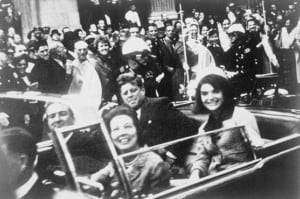
A visit to the Sixth Floor Museum in Dallas gets you thinking about the Kennedy assassination, one of the most fascinating events in American history. Who did it, and why?
In the parking lot of the Sixth Floor Museum at Dealey Plaza in Dallas, Texas, freelance tour guides wrangle tourists onto the grassy knoll and make wild claims about the Kennedy assassination. “51 people saw two gunmen shoot the president from this spot!”
The obvious question: “And none of them went to the police?”
“Some did, but their testimony was suppressed. Others were intimidated into silence. At least one was killed.”
On the wooden palisade fence that tops the knoll, the graffiti artists have scrawled their opinions. One reads: “About this spot. Bang! Bang!”
And the tourists eat it up.
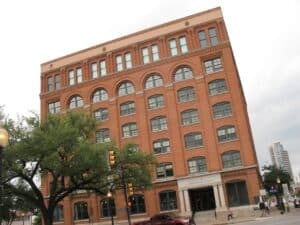
From the Sixth Floor corner window of the Texas School Book Depository came the shot that changed the nation.
The Mother of All Conspiracy Theories
The Kennedy assassination is one of the most fascinating events in American history. The national consensus of opinion changes from generation to generation. Right after the event, as we rode the last waves of post-World War II optimism, we were willing to believe what they were telling us, that a single gunman was responsible.
But as the upbeat attitude of the late 1950’s and early 60’s gave way to the cynicism of the 70’s, conspiracy theories abounded. By the late 1980’s we were growing weary of all that, eager to the return to a more positive view of the nation and ourselves, and by the late 90’s that evidence was refuted. Now in the age of Fake News when a lie is as good as the truth were back to believing in conspiracy theories again. But the Kennedy assassination is unique. Arguably, it is the mother of all conspiracy theories, the one that set the bar.
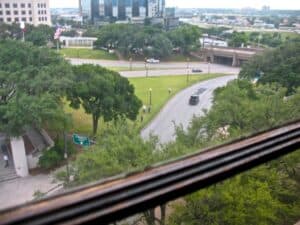
This is the view from the Sixth Floor window. This is the angle Oswald had. To the right beneath the trees is the grassy knoll.
It’s hard to believe now but as recently as ten years ago the popular view was that a single gunman killed Kennedy. Stephen King, in his 2011 bestseller, 11/22/63, revisited the controversy in fiction and came to the same conclusion, stating, “It is very, very difficult for a reasonable person to believe otherwise.” But to feel comfortable with that conclusion you have to ignore some pretty troubling facts, and if you think the Sixth Floor Museum is going to help you tie it all up with a neat bow, think again.
A Pristine Bullet, Mysterious Recordings, and Swapped Photos
Among the oddities that the Sixth Floor Museum doesn’t shy away from is “the pristine bullet”. That lethal projectile, the bullet that allegedly killed president Kennedy and struck governor John Connelly of Texas, did a marvelous thing. It passed through 15 layers of clothing, 7 layers of skin, and approximately 15 inches of tissue, burrowed through a necktie knot, removed 4 inches of rib, and shattered a radius bone, yet somehow came to rest on the gurney of the wounded Connelly intact, neither blunted or dented.
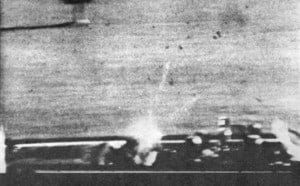
This frame from the Zabruder film shows the bullet slamming into Kennedy’s head. Question: Is that the back of his head, or the front? (Click any picture to enlarge).
The Warren Commission, tasked with getting to the bottom of the assassination back in 1964, insisted that the bullet was one of only three fired from Oswald’s gun, the only shots. But there is plenty of evidence there were others, acoustical evidence of shots coming from from the grassy knoll, backed up by the testimony of three credible eyewitnesses who reported hearing gunshots coming from that area.
What’s more, the location of the fatal wound is in dispute. The Warren Commission concluded that the bullet struck Kennedy above the right shoulder and passed through his neck, a trajectory that aligns with Oswald’s perch. But Robert McClelland, a doctor at Parkland Hospital where the autopsy was performed, testified that the back part of Kennedy’s head was blown out, with tissue missing, a finding consistent with an exit wound, suggesting that the fatal bullet was fired from the front, in the direction of the grassy knoll.
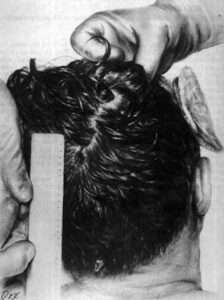
According to analysts, there is a “95% chance” that the autopsy photos of Kennedy’s fatal wound have been switched.
In the 1990’s the Assassination Records Review Board’s chief analyst for military records said he was “95% certain” that the autopsy photos in the National Archives, the ones showing the wound at the back of the neck, had been switched.
Everywhere you look, there are suspicious anomalies. And then there are the weird coincidences.
A Friend of the Family
Here’s one for you. Lee Harvey Oswald, by all accounts a nobody, a loser with no friends and no influence, was a palling around in the days leading up to the assassination with George de Mohrenschildt, a wealthy Russian ex-pat. Who is George de Mohrenschildt, you ask. Well, among other things, a close friend of the Bouvier family. So close, in fact, that he used to bounce 3-year old Jackie on his knee. That’s right, that Jackie, the one who grew up to become first lady, the wife of JFK.
Mohrenschildt eventually cracked up and committed suicide, but before he did, he managed to confess that he had been directed by a CIA operative to meet with Oswald in the days prior to the assassination. Then, according to a government led investigation, he succumbed to despair and shot himself – less than 48 hours after giving his confession.
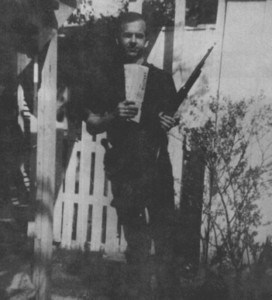
In this famous picture of Oswald holding the murder weapon he is seen holding up a newspaper, which fixes him in place and time, a peculiar thing for an aspiring assassin to do.
Oswald himself claimed he had been nothing more than a patsy. It was one of the few things he was able to say before he was gunned down by a disgruntled club owner named Jack Ruby a little more than 48 hours after the assassination.
Improbable Deaths
Ruby had been thinking he would get off with a relatively light charge of “murder without malice”, but he got the book thrown at him, was convicted of first degree murder and got the death penalty.
Not long after, imprisoned and desperate, Ruby told reporters, “Everything pertaining to what’s happening has never come to the surface. The world will never know the true facts of what occurred.” In a later interview with psychiatrist Werner Teuter, he said, “I was framed to kill Oswald.” Ruby died in prison of cancer. He claimed his enemies, who were trying to silence him, had injected him with cancer cells. He died a mere three years after killing Lee Harvey Oswald, taking his secrets with him. And his was not the only untimely death.
Untimely deaths cluster around the Kennedy assassination like birds on a wire, so many that the House Select Committee on Assassinations set out in 1978 to investigate what they called the “statistically improbable number” of deaths of people associated with the event.
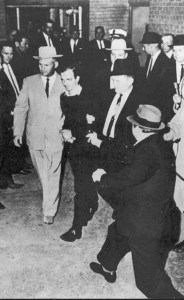
Jack Ruby shooting Lee Harvey Oswald. Ruby later told a pyschiatrist, “I was framed to kill Oswald.”
Among those who perished within a few years of the assassination were Lee Bowers, one of the eyewitnesses who testified he heard shots coming from the grassy knoll; he died in a car crash. John Garrett Underhill, a former CIA agent who expressed his conviction that Kennedy had been killed by a small clique in the CIA, killed by a gunshot wound to the head, death ruled a suicide. And Rose Cherami, a stripper in Jack Ruby’s club who tried to warn authorities that Kennedy was about to be killed in advance of the assassination. She was struck by a car, supposedly while hitchhiking.
Strange Coincidences and Questionable Evidence
All of this is examined and detailed at the Sixth Floor Museum. Housed on the sixth floor of the former Texas School Book Depository in the same place where Oswald fired his fateful shots, the museum is surprisingly frank and balanced in laying out the history and controversy of the assassination.
Arranged in roughly chronological order, beginning with the rise of Kennedy as a candidate, his election to the presidency, his early days in office, proceeding through the politics of the time and into the events leading up to the moment when the presidential motorcade entered Dealey Plaza, the museum incorporates a fascinating combination of photos, video, artifacts and static exhibits to paint a comprehensive picture of the assassination and its aftermath. It draws no conclusions of its own but leaves it up to each visitor to draw his own conclusions. I knew where I was coming down.
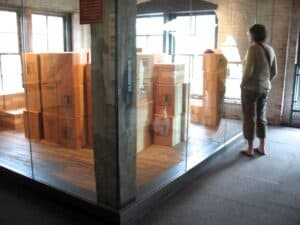
At the Sixth Floor Museum in Dallas, a museum goer ponders the glassed off corner where Lee Harvey Oswald hid among stacks of boxes to shoot the president.
The Turning Point
Given the strange coincidences, the lost and tampered with evidence, the suppressed and strangled testimony, to arrive unequivocally at the conclusion that a single nitwit loser, acting alone, assassinated JFK is a little like saying that nobody on Wall Street was responsible for the financial shenanigans that led to the Great Recession. You have to make a concerted effort to believe such a thing. You have to be allergic to the facts.
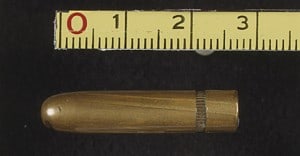
The pristine bullet. The Sixth Floor Museum doesn’t shy away from examining controversial aspects of the assassination.
Indeed, the Kennedy assassination stands as the pivotal moment in American history when the people of the United States went from trusting their government to suspecting it of things dark and nefarious. Vietnam added another layer to the cake, and Watergate put the bride and groom on top, but the Kennedy assassination made the batter to rise.
Kennedy’s Bitterest Enemies
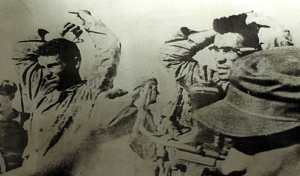
Kennedy’s refusal to provide air support resulted in the killing and capture of Cuban exiles at the Bay of Pigs.
So who was behind the murder of the nation’s 35th president? Conspiracy theories offer up everyone from the Soviets to LBJ, but the most plausible hypothesis is that the CIA, working in concert with anti-Castro Cubans and the mob, offed the president.
The reasons are manifest. First, Kennedy made bitter enemies of the anti-Castro Cubans and the CIA when he refused to provide air support to bail out the botched Bay of Pigs invasion. Kennedy was never wholeheartedly behind the invasion, having inherited it from the previous administration, so when it went sour, he was not about to call in air strikes, which would’ve led to an all out war with Cuba and most likely, by extension, the Soviets, thereby kicking off World War III.
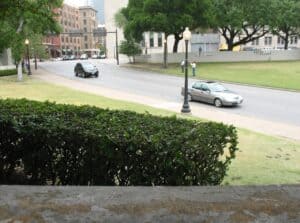
View from the grassy knoll. The second car is approximately where Kennedy was when the shots were fired.
Kennedy was having none of it, so the anti-Castro invasion force was killed and captured, giving a black eye to the CIA, who had advocated for the invasion, and to the anti-Castro Cuban community in South Florida, who despised Kennedy for betraying them.
Second, the Kennedy administration was in hot water with the mob, who had supported JFK’s run for the presidency, just as they had supported his father, Joe Kennedy, throughout his rise to power. The Kennedy fortune was made on the basis of questionable activities, and the Kennedys had been friendly with the mob at various points in the past. What’s more, the mob went to the mat for Kennedy during the election, bringing in the labor vote for JFK and tipping the election in his favor. So how did the Kennedys repay their criminal compatriots? By declaring an all out war against organized crime.
In the CIA and the mafia, Kennedy had made enemies of the people most capable of murdering him. Then came November 22nd, 1963.
A shot rang out in Dallas, and America became a different country, a country forever divided between people desperate to believe a sanitized version of the truth, and those who are more cynical. Today, both types can be found on either side of the political divide, each with their own brand of media dedicated to stirring up suspicions about the other. It’s a toxic environment, and one not destined to end well. And it all began when the government asked the public to ignore the facts and believe what it was telling them about the death of their leader. And some people simply couldn’t.
Check it out…
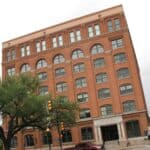 The Sixth Floor Museum at Dealey Plaza
The Sixth Floor Museum at Dealey Plaza
411 Elm Street
Dallas, TX 75202
214.747.6660
website
To find out how you can own your very own JFK Assassination Replica Car, visit the Unruly Stowaway
Previous stop on the odyssey: Taos, NM //
Next stop on the odyssey: Africatown, AL
About the author: Malcolm Logan is a freelance writer who specializes in US travel and US history, designing driving tours, seeking out interesting destinations and exploring US adventure travel. He can be reached at malcolmdavidlogan@gmail.com
Image Credits:
Kennedy motorcade, Public Domain; Former Texas School Book Depository, Malcolm Logan; View from the sixth floor window, Malcolm Logan; Fatal shot, Public Domain; Kennedy autopsy photo, Public Domain; Lee Harvey Oswald, Public Domain; Jack Ruby Killing Lee Harvey Oswald, Public Domain; Sixth Floor Museum display, Malcolm Logan; Pristine bullet, Public Domain; Captured Cubans at the Bay of Pigs, Public Domain; View from the grassy knoll, Malcolm Logan; Dealey Plaza, Malcolm Logan

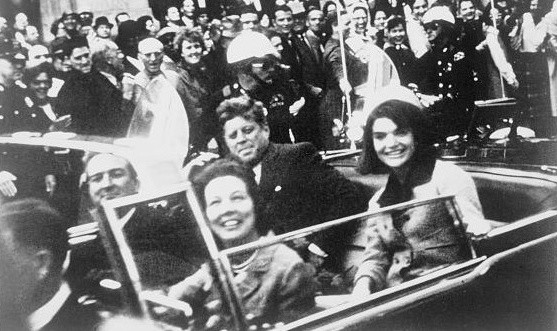
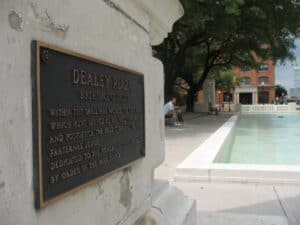
3 comments
[…] Previous stop on the odyssey: Hamilton, MT // Next stop on the odyssey: Dallas, TX […]
[…] The U.S. mini series The Kennedys finished on ABC1 this week. It aired over the last four weeks and…strong>ABC1 this week. It aired over the last four weeks and included some great performances from all of the lead actors and some great insight on modern history for those of us that were too young to know and were not born in the USA. [caption id="attachment_1200" align="aligncenter" width="420" caption="The Kennedys mini series"][/caption] Greg Kinnear played John F Kennedy with a suitable accent and hairpiece. Katie Holmes played his wife Jackie, she was stunning and you could believe that she could have been the fashion icon of her generation. Barry Pepper was great too as Jack's saint like Brother Bobby and Tom Wilkinson was suitably seedy as the ultra ambitious and scheming patriarch Joe Kennedy Senior. Other family members were featured and Diana Hardcastle also deserves special mention as Rose Kennedy, the mother of the President and Attorney General. As does Kristin Booth, who played Robert Kennedy's wife Ethel, as a sort of grown up Bobby Soxer of that era. But I do not remember any mention of Ted Kennedy, the youngest brother and longtime U.S. Senator, who died in 2009. But I suppose you can only fit so much in, even in a show that ran for almost 6 hours. [caption id="attachment_1201" align="aligncenter" width="458" caption="Greg Kinnear and Katie Holmes as John and Jackie Kennedy"][/caption] The show took us from before JFK was President, the planning and scheming of his father. First of all to get his older brother Joe Junior into the White House, after he himself had been disgraced as the U.S. Ambassador in London, before and during the second World War. But Joe Junior died in combat and the focus fell on John Kennedy, although he was shown not to be so keen himself for the office initially. Once he was in office so many things happened in those 3 short years. I had of course heard of the Bay of Pigs invasion and the Cuban Missile Crisis, we've all heard the Billy Joel song. But I never realised how close we came to a third World War and what John Kennedy did to avoid it. Of course his indiscretions with actresses, including Marilyn Monroe, were covered and his father's, who seems to have schooled him in philandering. But I was also unaware of the situation that the Kennedys got themselves into with the Mafia. Having sought their help in getting JFK elected and then Bobby going after them with the FBI once they were in office. This, coupled with the Civil Rights riots and disruptions in the South, make it highly unlikely that the assassination of the two brothers was by men acting alone. [caption id="attachment_1204" align="aligncenter" width="480" caption="The Kennedys on TV"][/caption] [caption id="attachment_1205" align="aligncenter" width="460" caption="The real Kennedys"][/caption] Coincidentally there was a program on Channel 9 recently where Michael Parkinson interviewed David Frost. Now Frost has interviewed most of the major figures of our time and Parkinson asked him who was the most impressive. He of course mentioned Nelson Mandella, adding that even his jailers on Robben Island were in awe of him. But he said that Robert Kennedy was a man who really believed that one man could make a difference and it was probably a great loss to the world that he never became President. If you did not catch The Kennedys on ABC, I highly recommend that you track it down. It is very long, but well worth watching. […]
[…] stop on the odyssey: Dallas, TX // Next stop on the odyssey: Stanton, […]